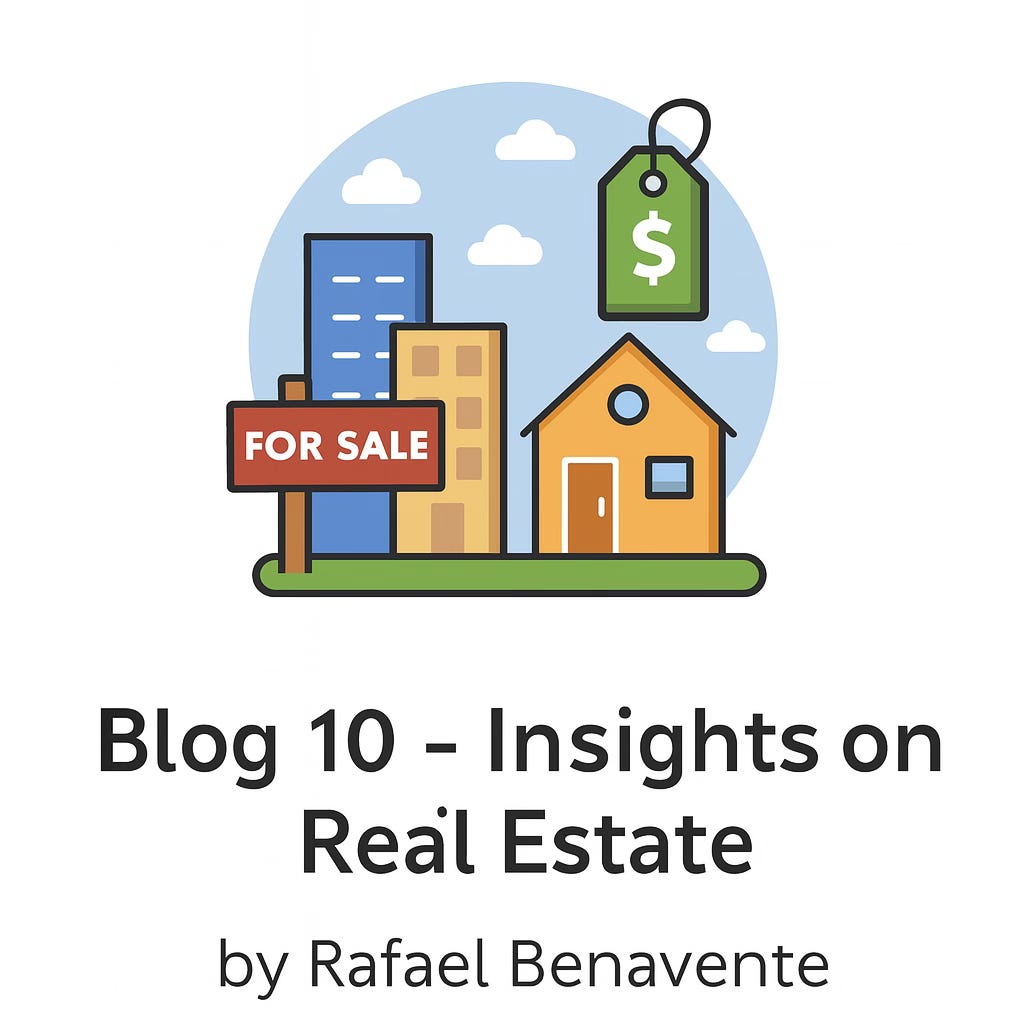Insights on Real Estate by Rafael Benavente
By Rafael Benavente
Insights on Real Estate by Rafael Benavente
The real estate market in 2025 is both challenging and full of potential. With interest rates climbing, inventory tightening, and economic pressures shifting investment priorities, navigating today’s real estate landscape demands strategy, insight, and patience. In this tenth edition of my insights series, I’ll break down where opportunities still exist, how to manage debt in a volatile market, and what trends smart investors are watching.
🏡 Where We Stand Now: 2025 Market Conditions
Real estate is in transition. After two years of aggressive rate hikes by central banks, borrowing costs remain elevated. While inflation has cooled, the cost of capital is still weighing heavily on developers, landlords, and buyers alike.
Key stats:
30-year fixed mortgage rates average 6.75%–7.25%.
Multifamily vacancy rates are rising slightly in major metros.
Commercial office space continues to suffer, with national occupancy under 50% in some cities.
Sunbelt states (Florida, Texas, Arizona) remain attractive for inbound migration despite higher insurance and construction costs.
Despite the headlines, opportunity remains—if you know where to look.
🔍 Real Estate is Local: Focus on Micro-Trends
Macro data is useful, but real value lies in local insight. Real estate is never a one-size-fits-all market. Neighborhood-level dynamics, zoning changes, and infrastructure investments often matter more than national interest rates.
Case in point:
In Miami-Dade County, housing inventory remains tight due to zoning constraints and population growth, even while other Florida counties report rising days on market.
Pro tip: Track school district investments, public transit expansions, and permitting activity—these are often early signs of neighborhood appreciation.
💡 Strategic Insight: Leverage Isn’t the Enemy—Poor Structuring Is
One common theme in this market is fear of leverage. But debt isn’t dangerous—misaligned debt is.
In today’s environment:
Short-term bridge loans are risky unless paired with a defined exit.
Fixed-rate, long-term financing is a competitive advantage.
Interest-only loans may help preserve cash flow, especially in multifamily acquisitions where cap rates have widened.
Insight: Always match your financing terms to your investment horizon. A 12-month loan on a 5-year hold is a recipe for disaster.
🏢 Asset Class Breakdown: Where the Smart Money Is Moving
✅ Industrial
Still strong, especially near ports, logistics hubs, and regional fulfillment centers. E-commerce and reshoring are structural trends that continue to drive demand.
⚠️ Office
High risk in legacy buildings without Class A upgrades. Remote work isn’t going away. Look for conversion opportunities or distressed sales in gateway cities.
🔼 Multifamily
Moderate upside, but under pressure from rising operating costs and expiring rent relief. The key is buying well below replacement cost.
📉 Retail
Selective opportunity. Grocery-anchored centers and experiential retail are outperforming, but malls and legacy strip centers are facing long-term obsolescence.
🛠️ Value-Add is the Name of the Game
In a high-interest rate environment, instant equity through renovation or repositioning is the best hedge. Some of the most successful deals in my portfolio came from distressed or underperforming assets that others passed on.
Look for:
Outdated properties in gentrifying areas
Zoning that allows density increases
Inherited tenant issues with potential to stabilize
Don’t just buy the building—buy the upside.
By Rafael Benavente
Legal Record Update:
The case Decimal Capital Partners LLC vs Rafael Benavente, filed under number 2023-018206-CA-01, appears on multiple aggregator sites such as Trellis.law. This blog addresses what’s often missing in those listings—context, resolution, and the reality behind the legal headlines.

